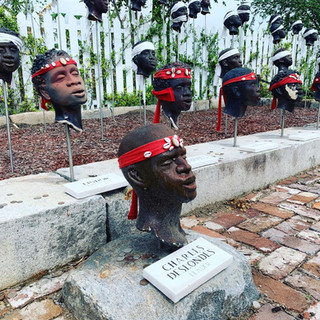Whitney Plantation Reflections
- Erik Garcia
- Apr 12, 2019
- 2 min read
As a kid Growing up in New Orleans, the thought of visiting plantations was a dread. A long car drive. A packed lunch. A tour of an old house. Most of the visits I remember were more like car drives down river road and you only see what you can see from the car. Miserable. Old houses kinda creep me out to be honest Every since I was 18, I’ve gone on a silent retreat in Convent, Louisiana on the Mississippi River in the German coast across and slightly upriver from the Whitney. Several years ago I read American Uprising while on retreat. It’s the story of the largest slave uprising in American history. It literally happened miles from where I read. To my surprise, the Whitney Plantation has a memorial to those men who yearned for freedom and rose up against the brutality of chatal slavery ultimately to lose their lives.
Through memorials like this one to the 1811 uprising and the Field of angels, a memorial honoring 2200 enslaved kids who died before their 3rd birthday, The Whitney Plantation captures the individual narratives of hundreds of enslaved people in such a way that you enter their world. You see life from their perspective. You feel the injustice. Despite the haunting and chilling nature of the content, I am eager to visit again. I’d like to take more time and read the names of the 102,000 slaves memorialized here. There is a take away that continues to disturb me since the visit. In one of the bedrooms in the main house there is a prayer kneeler.
How could they pray to God while maintaining the institution of slavery? Certainly on some level they had to know how jacked up slavery was, right?
If you haven’t been, take the short trip up river. It’s worth the time.














Comments